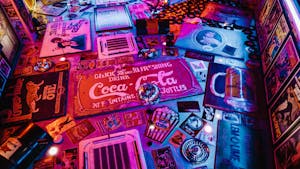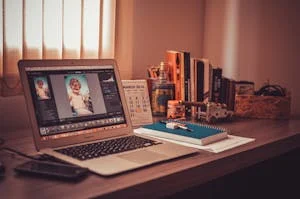Welcome to
Graphic Design 101

Introduction to Graphic Design
Graphic design is the art of visually communicating ideas through typography, imagery, color, and layout. Whether you're designing for print, digital media, or branding, mastering design principles is essential for creating impactful visuals.
In today's creative industry, graphic design plays a crucial role. A well-designed visual can make the difference between capturing an audience's attention or being overlooked. It combines elements like composition, typography, and color theory to create engaging and effective designs.
Below, you'll find valuable resources and tools that will help you develop your graphic design skills, keep up with the latest trends, and improve your creative workflow. Whether you're a beginner or a pro, these materials are meant to inspire and empower you to create stunning designs.
1. Graphic Design Resources
-
Free Design Tools & Software
Explore free or popular design tools like Adobe Photoshop, Illustrator, Canva, and GIMP. Learn how to use them with tutorials and tips.
-
Typography & Fonts
Discover the best font pairings, typography rules, and sources for free and premium fonts. Visit Google Fonts or DaFont for great font collections.
-
Design Inspiration
Find inspiration for your next project by exploring top designers' work. Check out Dribbble or Behance for creative ideas.
2. Step-by-Step Tutorials
-
Beginner Guides
Learn the basics of graphic design, including color theory, composition, and branding principles. Refer to Smashing Magazine for beginner guides.
-
Advanced Tutorials
Explore advanced design techniques like photo manipulation, vector art, and branding. Tuts+ Design offers great in-depth tutorials.
-
Project Walkthroughs
Follow along with real-world design projects such as creating logos, posters, and digital illustrations. Check out Skillshare for structured courses.
3. Design Trends & Best Practices
-
2025 Graphic Design Trends
Stay up-to-date with the latest design trends like minimalism, 3D design, and bold typography. Visit Creative Bloq for design trend reports.
-
Color Theory & Psychology
Understand how colors impact emotions and brand perception. Learn more at Color Matters.
-
Branding & Identity Design
Explore strategies for creating compelling brand identities, from logo design to cohesive visual branding. Check out 99Designs for insights.
4. Career Growth for Graphic Designers
-
Building a Portfolio
Showcase your best work with an online portfolio. Use platforms like PortfolioBox or Behance.
-
Freelancing Tips
Learn how to start a freelance design career, manage clients, and set rates. Upwork and Fiverr can help you find work.
-
Design Communities
Join online design communities to network and get feedback on your work. Check out Dribbble and Reddit’s Graphic Design Community.
"Good design is good business." – Thomas Watson Jr.


Many individuals begin with freelancing as a side project, leveraging existing skills to generate additional income. This extra income can be used for personal goals like travel, saving, or investing, or even for growing a future business.
Freelancing offers freedom and flexibility, but it requires patience, planning, and determination. Here are some essential tips to keep in mind as you embark on this path:
- Clarify your expertise: Identify the areas where you excel and can add value. Specializing in certain skills can help you stand out in a competitive environment.
- Create a portfolio: Showcase your best work in a way that’s easily accessible to potential clients. A simple website or online presence can serve as a platform for your portfolio.
- Set attainable goals: Start with smaller, manageable projects. As you grow in experience, you can increase your workload and expand your reach.
- Promote your skills: Explore various ways to connect with potential clients, including using online platforms, social media, or word-of-mouth referrals.
- Be mindful of finances: Set aside funds for taxes and savings, and make sure to manage your income and expenses effectively to avoid stress later on.
It’s important to understand that freelancing requires persistence and time. Building a strong reputation and a steady client base won’t happen overnight, but with consistent effort, you can achieve both personal and professional success.
